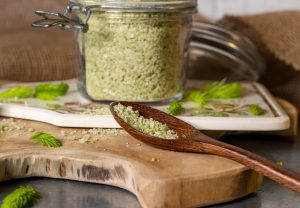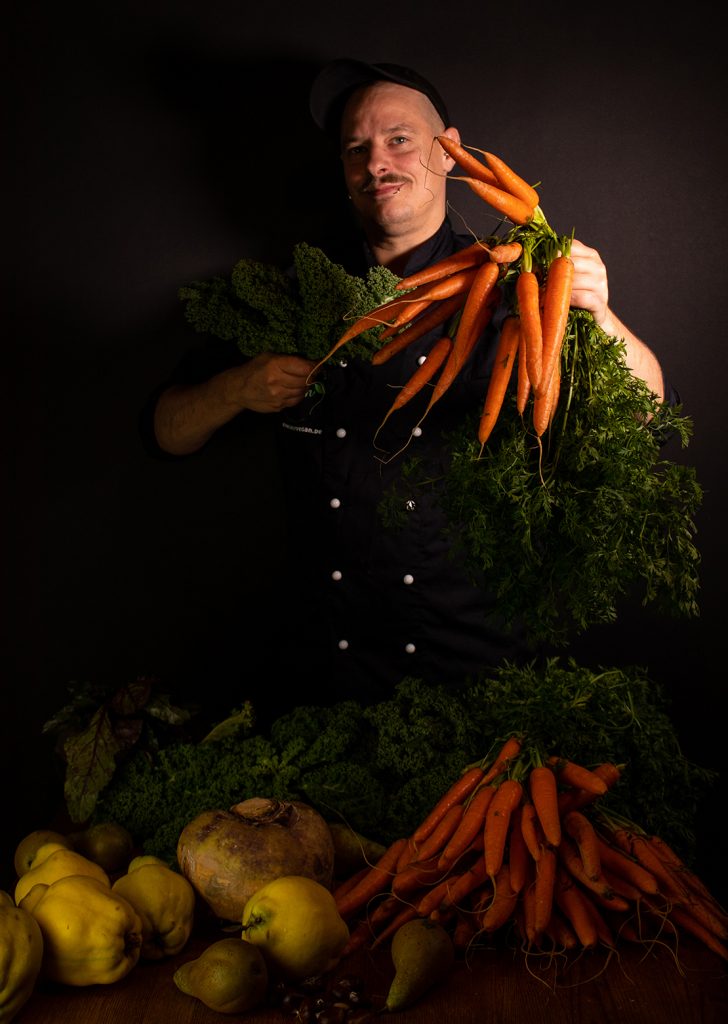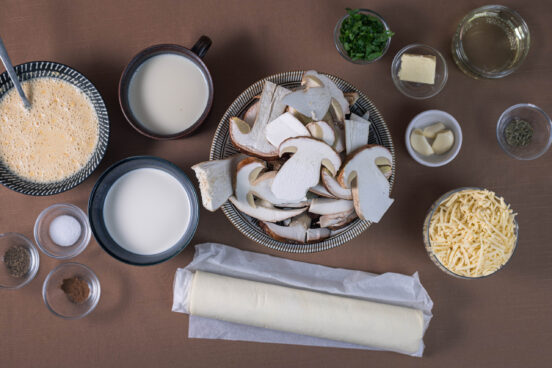I always harvest the fresh elderflowers for my elderflower vinegar as early in the year as possible. It needs four weeks to infuse and I want to enjoy it as quickly as possible. My aromatic, deliciously fragrant elderflower vinegar enhances any salad. It adds a wonderful note to marinades and reductions. And if stored in a cool, sealed container, it will last until the next season.
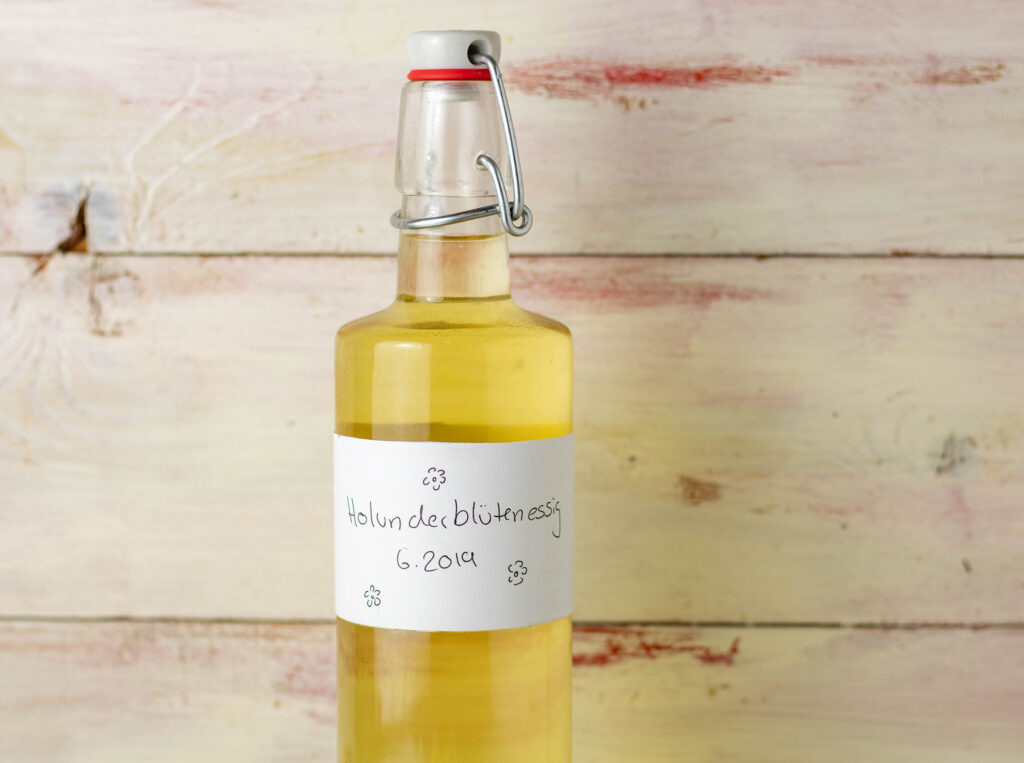
Home-grown lettuce and edible flowers with homemade elderflower vinegar
The salad in the pictures was harvested entirely from my balcony. With lettuce, nasturtiums and a few peas, fresh from the pod. Garnished with edible flowers of mallow, pansys, nasturtiums and borage. Incredibly good!
And on top a simple dressing made of this tasty vinegar, olive oil, salt and pepper. Very simple and fantastic.
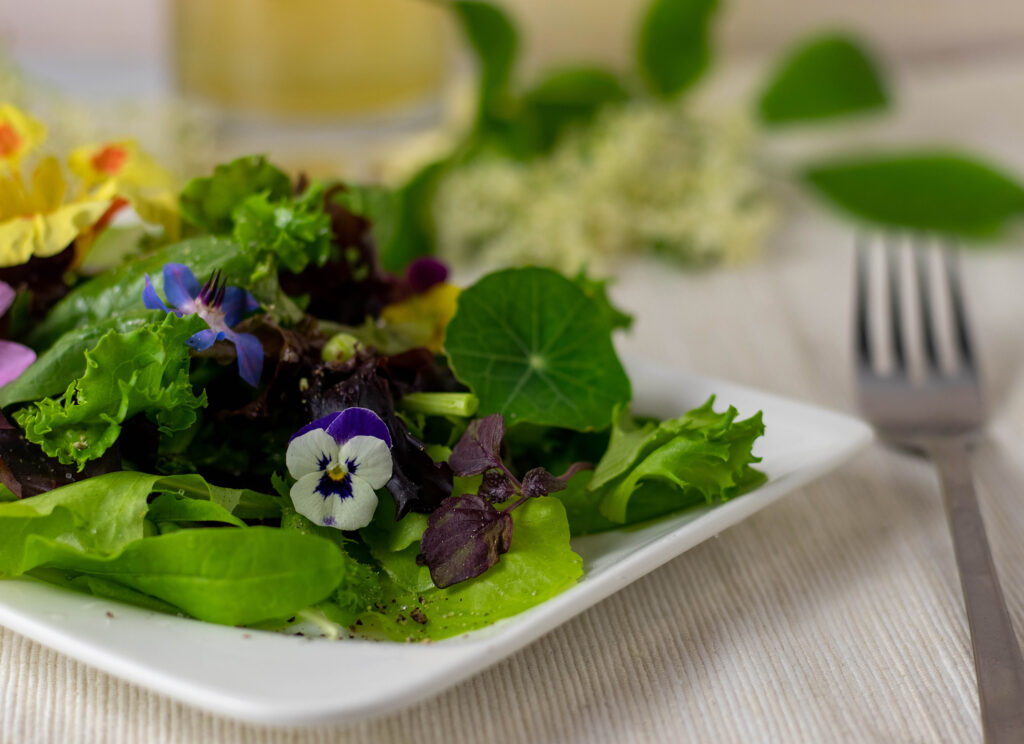
What does elderflower vinegar go with?
My elderflower vinegar tastes fantastic and its sweet and sour aroma enhances many dishes.
Of course, you can make various salad dressings with it, from simple vinegar and oil dressings to herb dressings and yogurt or mustard dressings.
My elderflower vinegar is also ideal for marinades and reductions. Its floral, slightly fruity note goes very well with various vegan meat dishes.
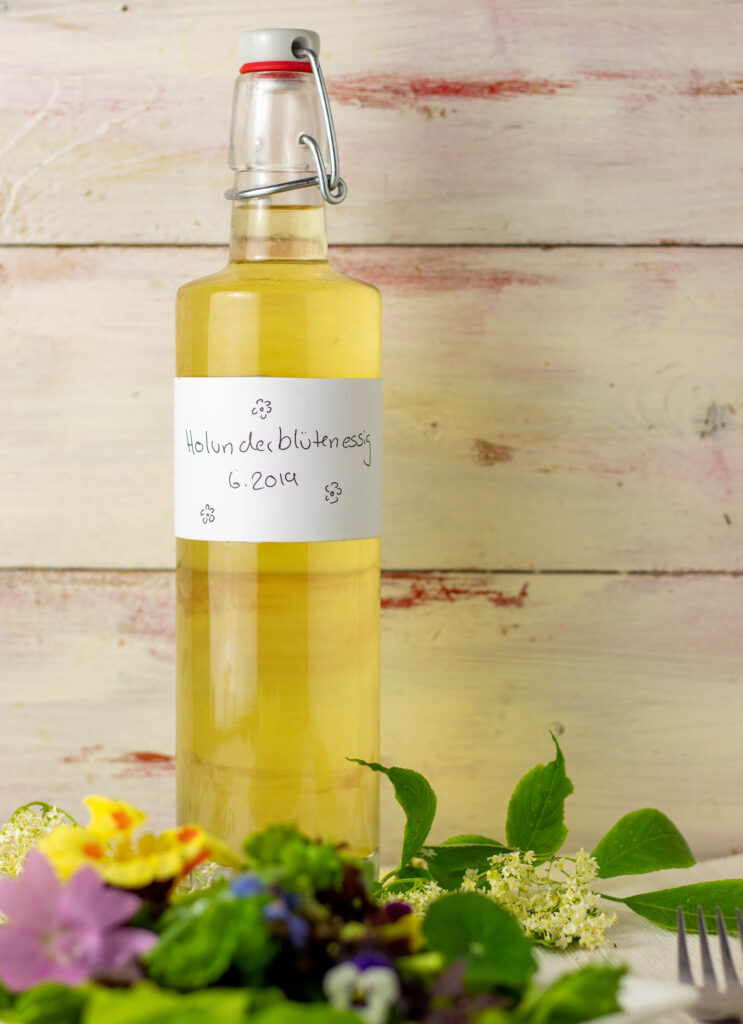
Elderflower vinegar is very easy to make from just 2 ingredients
My elderflower vinegar is very quick to make yourself in just a few steps. And you only need 2 ingredients.
Then a little patience until the vinegar has infused, and then it is strained and can be enjoyed all year round.
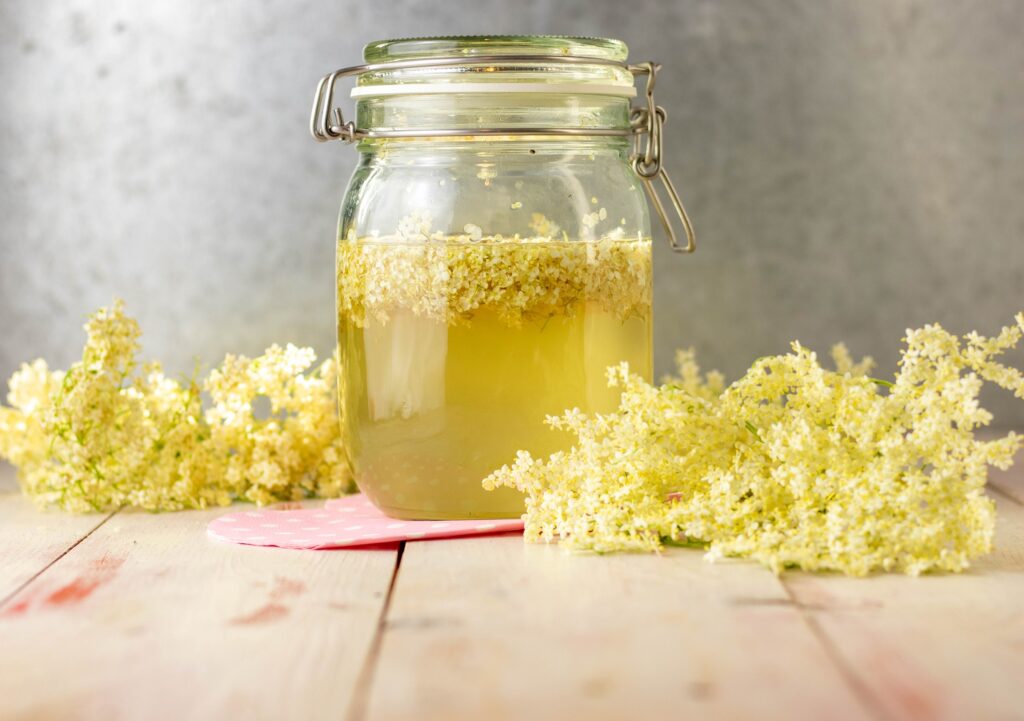
Capture the scent of elderflower and preserve it for the whole year
Stored in a cool, dark place, my fragrant elderberry vinegar will last all year round until the next elderflower season. This way, you can capture the scent of elderberry and preserve it. And give your salads that little extra something with the brilliant taste of elderberry.
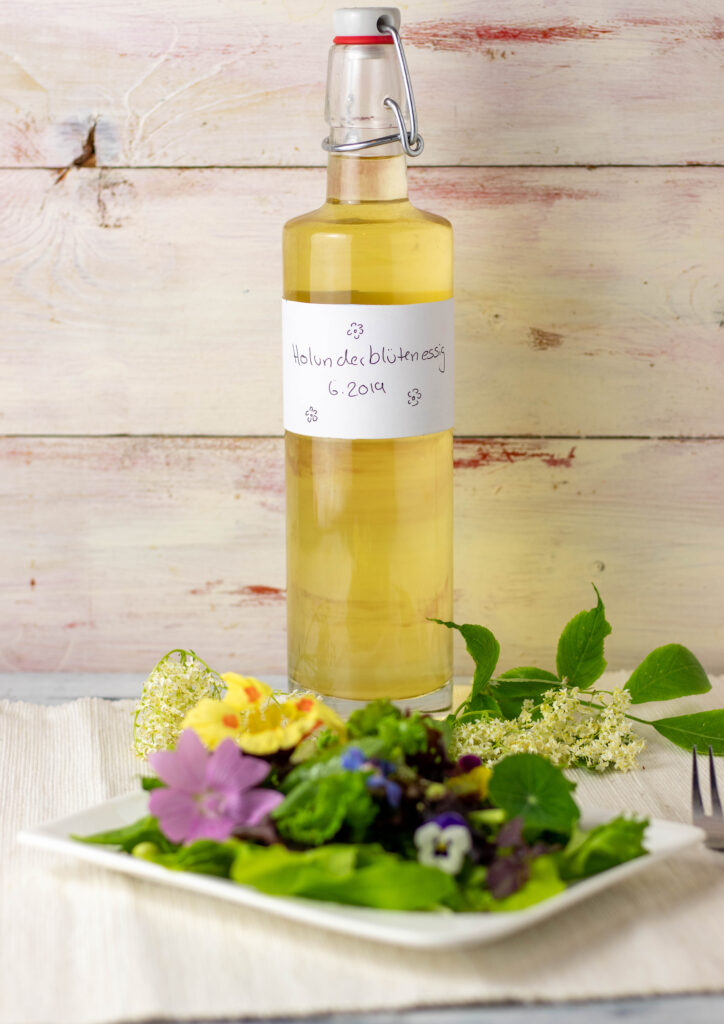
Foraging ingredients yourself, climate-friendly delights
I love foraging ingredients in nature myself and then processing them. Conjuring up seasonal, regional dishes that cannot be prepared with ingredients from the supermarket. This results in environmentally friendly delights!
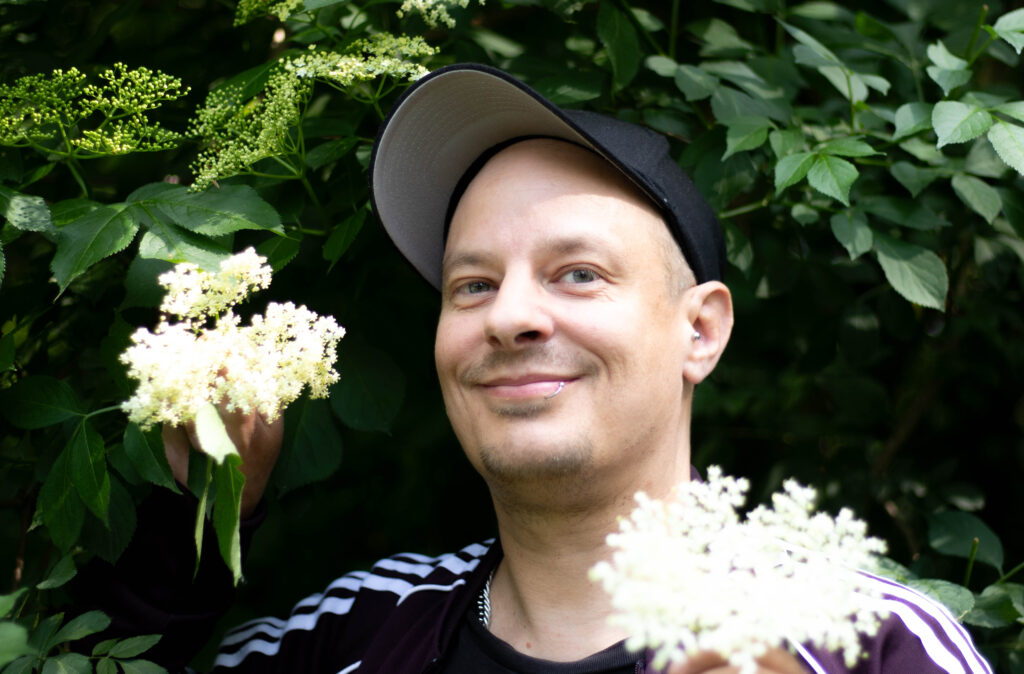
When is the best time to harvest elderflowers?
Elderflowers begin to blossom in May and continue to bloom until late June.
Elderflowers are most aromatic on a warm, sunny day. It is best to pick them in the early afternoon when they have already received a lot of sun and are still in the sunshine.
You should shake the elderflowers gently immediately after picking them if there are still insects in them. To preserve the aroma, do not wash the umbels. Therefore, you should not pick them too low on the bush.
Rainy days are not suitable for picking elderflowers, as wet flowers have significantly less aroma.
It is advisable to harvest elderflowers early in the season. This is because the umbels are also very popular with aphids and other small animals. The longer the season has been going on, the more likely it is that the flowers are already infested.

More delicious recipes with ingredients from the wild
I love cooking with foraged handpicked ingredients. If you do too, feel free to try out some of my other recipes:
- Elderflower and strawberry jam – enticing sweet summer joy
- Spruce salt – herbal salt made from foraged, young spruce tips
- Dandelion honey – vegan, foraged on the meadows and preserved!
- Spruce tip honey – homemade vegan forest honey
- Wild garlic paste – preserve the taste all year round
- Green waffles – wild garlic & spinach waffles – plus dip & asparagus
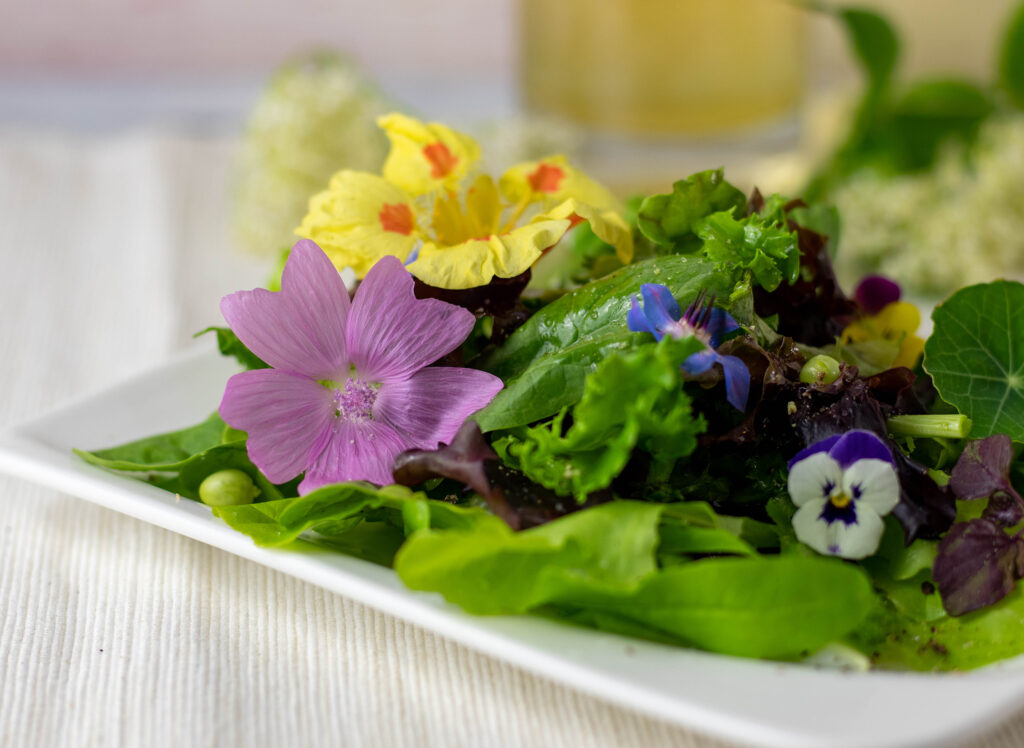
Looking for vegan salad recipes?
Take a look at the ‘Salad’ category here on Daily Vegan. You’ll find lots of fresh inspirations there.
Ingredients for 750 ml elderflower vinegar:
5 elderflowers umbels
750 ml white balsamic vinegar
Preparation:
- The elderflowers should be harvested on a dry, sunny day. Elderflowers are most aromatic on sunny days at midday or in the afternoon. When they have already had a few hours of sun. And we want a full aroma for our flower vinegar.
- Put the white balsamic in a bottle or jar with a wide lid.
- Pluck the flowers from the umbels and place them in the vinegar. When plucking the flowers, shake off the bumbels. This will prevent any small creatures from getting into the vinegar.
- Let the flavored vinegar steep for four weeks.
- Then strain the finished elderflower vinegar through a cloth or a very fine sieve.
- Now pour the vinegar into a sealable bottle. Stored in a cool, dark place, the homemade vinegar will last for many months.
The elderflower vinegar is ready. Easy, right?
Have fun with it! And enjoy!
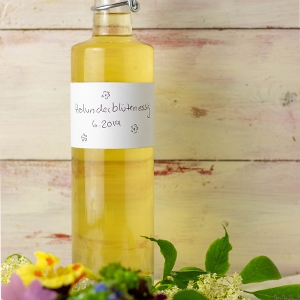




 Based on 15 Review(s)
Based on 15 Review(s)



